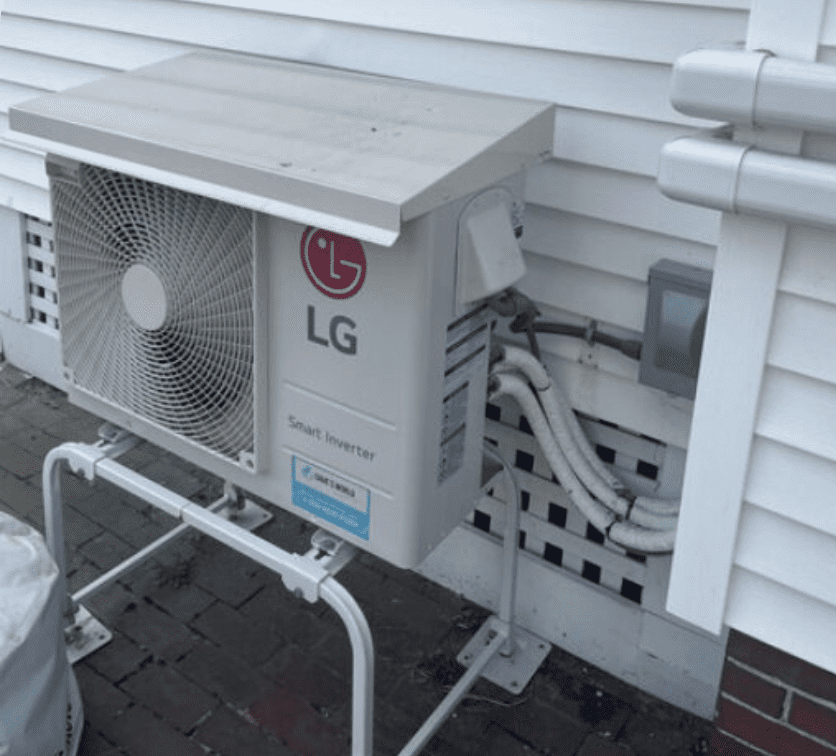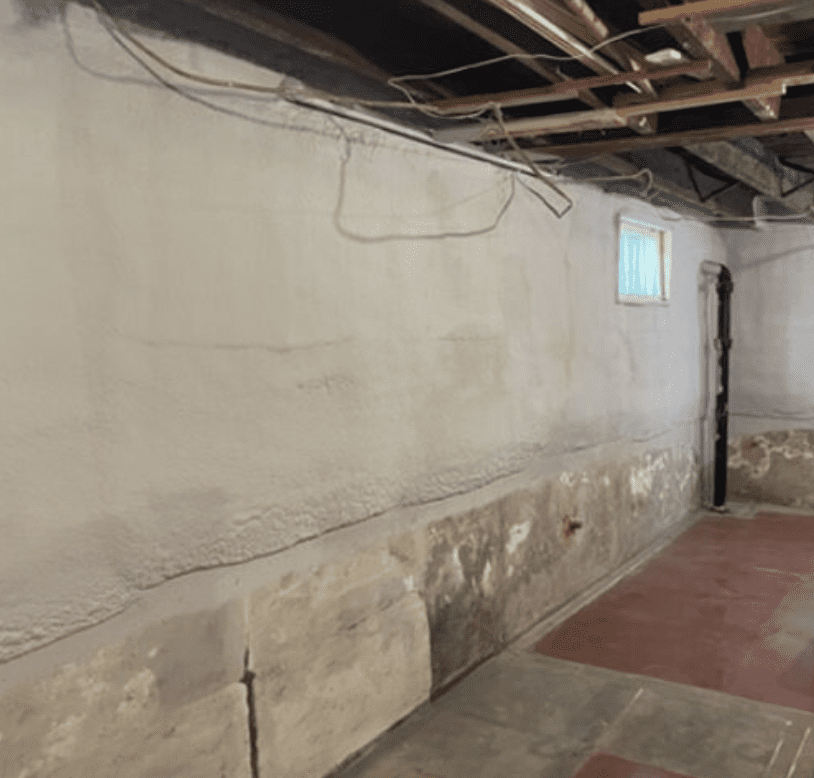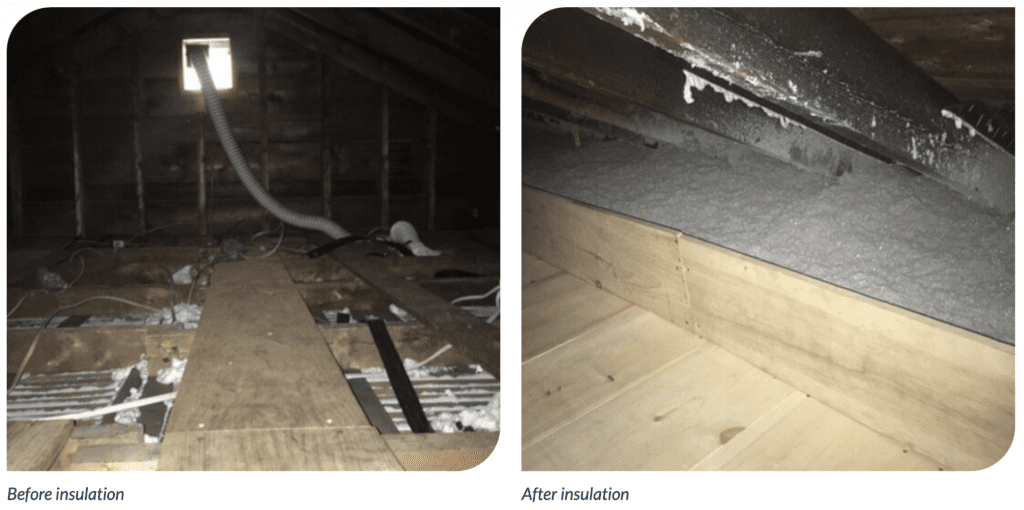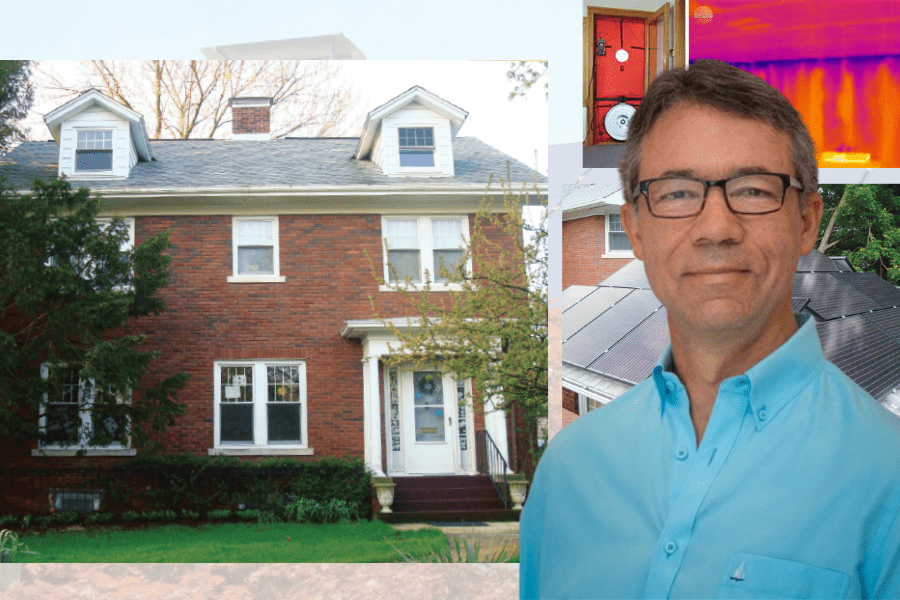Dec 20, 2023
How One Maine Homeowner Turned His 101-Year-Old Home Into a Haven
After moving with his wife, Robin, and two young children to a three-bedroom, one-bath home in Maine, Patrick Woodcock set about actively improving his home’s energy resilience and performance. That’s no small feat in a severe northern climate — or in a house built in 1922.

Beginning the Home Performance Journey
Like a lot of people, after moving into his new home, Patrick noticed the little things that won’t necessarily show up on pre-sale inspection reports. The home’s not-so-great insulation, for example, as well as the radically uneven distribution of indoor heat from a gas furnace.

“When I realized that the heating was so uneven, especially in the baby’s room — I knew it was a problem I’d have to address,” Patrick recalls.
Plus, there was the associated noise to consider. “It could get pretty loud when the baseboard rattled from the furnace,” he says.
And comfort aside, there were other important motivators in Patrick’s mind — the possibility that his home’s indoor air quality, which hinges on consistent air circulation, could be compromised.
But before taking any action, Patrick strategically brought in a home-performance expert, who conducted a comprehensive home energy audit, including a blower-door test, which is an important best practice. Soon thereafter, several key projects got underway:

Adding much-needed fiberglass insulation to help air seal his home’s attic, which is generally the best starting point for improving your home’s energy efficiency and resilience
Installing a two-unit air-source heat pump in the living room and the baby’s room, which helped balance indoor temperatures year-round
Applying spray-foam insulation to better insulate the basement and further reduce the home’s total energy consumption

Home Performance Rewards
“We now have world-class insulation, and we’re seeing substantial cost-savings, too. I’d estimate that the air-source heat pump alone has offset our reliance on the gas furnace, and the associated costs, by about 40%,” Patrick proudly reports. “At this point, we really only depend on the gas furnace during the dead of winter.”
No small accomplishment, particularly in light of the unique challenges that Maine poses from a home performance standpoint, which Patrick readily acknowledges.
“Maine is a really beautiful place to live, but it also has some of the oldest housing stock in the country, most of which is highly reliant on home heating oil,” Patrick explains, “and that can make the winters here exceptionally expensive for homeowners.”
Fortunately, though, as Patrick himself can attest, that’s starting to change. The state recently announced that it’s a full two years ahead of its goal of installing 100,000 new heat pumps by 2025, for example. Hopefully, what’s more, positive experiences like Patrick’s will help dispel the common misconception that heat pumps don’t operate efficiently in colder climates.
Looking ahead, he said, “I see a huge opportunity for homes in Maine and elsewhere to become much more energy efficient by taking advantage of local contractors, as well as public policies like tax credits and rebates. Personally, I’m happy to say, on behalf of my whole family, that we now feel like we have a much more comfortable and sustainable home to live in.”
How Patrick Brought His Vision to Life
No man is an island, and Patrick, for his part, certainly wasn’t alone in bringing to life these initial home performance improvements. Specifically, help came in the form of tools and resources available for free on the Green Door app from Pearl Certification.
So far, Patrick says he’s primarily taken advantage of Pearl Points, a scoring system designed to help you recognize and track high-performing assets and energy-efficient home improvements. Think of it like a credit score — it translates directly to resale value, after all — reflecting the following asset categories:
- Building shell: insulation, air sealing, windows, and doors
- Heating and cooling: heating, cooling, and distribution systems
- Baseload: water heater, appliances, and lighting
- Home management: monitoring systems, controls, and planning
“The scoring system is sort of addictive,” Patrick says with a laugh. “By that, I mean it’s like the way you want to reach the next level in a video game.”
More seriously, he intends to wrap his points into a Pearl Home Investment Plan, which can help homeowners like Patrick prioritize and plan for home performance improvement projects based on their existing assets, then connect with Pearl Network Contractors for certified installations, among other things. It’s directly actionable, in other words, and helps make the financial planning piece more transparent, too.
Reflecting on his experience so far, Patrick said, “A lot of my existing home assets were used and/or fairly old, so I’ve been really grateful to the team from Pearl for being so hands-on and responsive in helping me understand the value of each asset. I’ve been able to be much more strategic in mapping out my investments because of it.”
And for anyone considering undertaking similar projects on their own homes, Patrick had this to say: “Doing so will help you save on bills, for sure, but it can also become fun and a little bit of a hobby. Personally, I hope that, by making these and other improvements over the next decade or so, I can leave my kids — the next generation — in a position where they’ll not only save energy costs and live more sustainably but also get to see a much higher appraisal value when the time comes, too.”
This article was originally published in the Pearl Certification Blog and is republished with permission.
Pearl Certification is a national firm that qualifies an elite network of professionals and certifies high-performing homes: homes with heating and cooling, solar, smart home devices, resilient features, and much more. Pearl’s Certification Reports drive demand for these features by making them visible at the time of sale. They enable home sellers to capture the value of their investments and buyers to find the homes they want. www.pearlcertification.com.
Related Articles
Stay Updated
Sign up for our mailing list to stay updated on all things home and building performance.
"*" indicates required fields
By submitting this form, I understand I am subscribing to an email list to receive ongoing communication from BPA.




